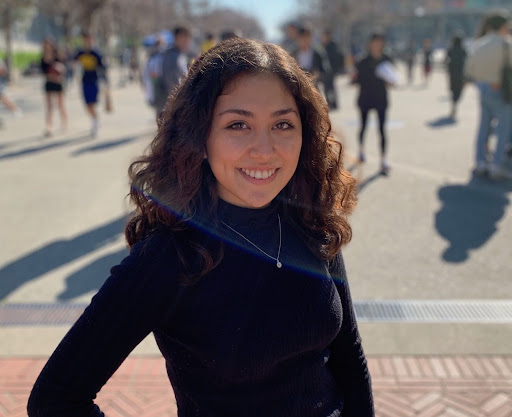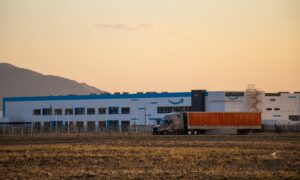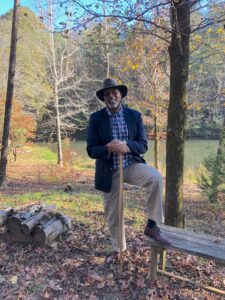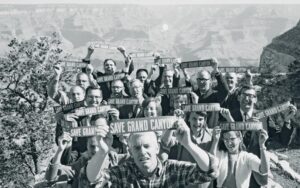Enlisting Humanity by Uplifting the Voices Who Have Gone Unheard
By Emily Nodal

Emily Nodal, UC Berkeley Class of 2022, is a Society and Environment major in the Rausser College of Natural Resources with an emphasis on justice and sustainability while minoring in public policy. In Spring 2021, Emily worked with historian Roger Eardley-Pryor in the Oral History Center of The Bancroft Library and earned academic credits as part of Berkeley’s Undergraduate Research Apprentice Program (URAP). URAP provides opportunities for undergraduates to work closely with Berkeley scholars on research projects for which Berkeley is world-renowned. For her URAP project, Emily used oral history materials to create the video embedded below on “Environmental Justice, Systemic Racism, and Democracy.” She also suggested high school curriculum materials to accompany the video. Below, Emily shares the personal nature of her research.
For my URAP project during the Spring 2021 semester, I had the privilege of developing a high school curriculum on environmental justice utilizing the narratives and perspectives of those interviewed by the Oral History Center. This project was very personal to me because environmental injustice has become increasingly prevalent in my own community.

I grew up in the Inland Empire, an industrialized region in Southern California inhabited predominantly by low-income communities of color, where consistently poor air quality and smoggy days felt like the norm to my peers and me. In recent years, the rapid development of Amazon warehouses and corresponding traffic congestion has exacerbated the environmental vulnerability of my community’s exposure to environmental toxins and their subsequent health hazards.
Efforts in 2020 to expedite delivery services for the online shipping boom wrought by the coronavirus pandemic resulted in dramatic expansion of Amazon’s shipping facilities while further enriching the multi-billion dollar corporation. Amazon’s development efforts have heightened shipping efficiencies and brought new jobs to these predominantly low-income communities of color, while also disproportionately burdening the already polluted region with negative amenities and toxic hazards. According to the Inland Empire-based “People’s Collective for Environmental Justice,” the more than 3,000 warehouses in the Inland Empire are all sited in the highest percentile for toxic emissions in the state and the populations living within a half-mile radius of the warehouses are 85% people of color. As someone who grappled with the realities of environmental inequity directly, I welcomed the chance to expand my environmental justice research into an effective, oral history-based high school curriculum.
While exploring the array of interviews in the Sierra Club Oral History Project archive, I felt drawn to the narrative of Aaron Mair, a leader in the environmental justice movement and a former president of the Sierra Club. As a prominent Sierra Club leader from the EJ (environmental justice) movement and the first black president of the historically white environmental organization, Mair vividly illustrated how we, as environmental activists, must understand our environmental well-being as linked inextricably to the social, racial, and economic well-being of all others. Mair’s oral history became the basis for the educational video I created.

The ability of Mair and his family to endure the burdens of generational racism while at the same time upholding a connection to the natural world resonated with me and my own family’s experiences. Unlike the predominantly white leaders in the Sierra Club, many of whom began their activism focused on land and wildlife preservation, Mair’s lived experiences enabled him to see the cruciality of equitably uplifting all human and non-human stakeholders in conversations around environmental protection. He explained how his journey into the mainstream environmental movement came from his “family’s sense of home-place and a civil rights struggle, a migration struggle and pressure, dealing with the pressures of racism, while at the same time maintaining human dignity, but also maintaining a connection with their love of the natural beauty and wonders.”
Although I grew up in a low-income household, my family also valued the outdoors and took me camping in nature, which created my deep connection to and reverence for the natural world. However, I found my own experiences vastly different from many of my school peers from similar backgrounds. Environmental scholars like Carolyn Finney and Lauret Savoy have explored why many black and brown kids, from a young age, come to believe that nature and environmentalism isn’t for us. For too many of us, natural places and spaces are financially and even culturally inaccessible.
My engagement with Mair’s oral history narrative, coupled with my own experiences, reinforced how that racial exclusion emerged out of environmentalism’s flawed beginnings. Like many other movements in United States history, campaigns and institutions for wilderness preservation, land conservation, and modern environmentalism have been historically white-dominated. Mair examined this harmful past by reflecting upon his own organization and its founders, including the notoriously racist early UC Berkeley professor Joseph LeConte. As Mair explained in his oral history, LeConte “believed that African-Americans and Native Americans were inferior and separate and distinct races. He believed in his theory of life, which is that whites had a natural order and a higher chain of evolution over all things. He preached a theory of dominion over all things as opposed to stewardship of all things.” The problematic ideologies of early environmental advocates like Joseph LeConte permeated into the early environmental movement’s limited range of diversity and exclusionary land management practices. As described by Mair “it was them imposing upon [the land] their white will.”
In his oral history, Mair also explained how the environmental movement’s history continues to plague 21st century environmentalism in fundamental ways. Mair noted how “othering” marginalized groups historically has created contemporary environmental crises, as exclusion from environmental spaces has prevented those groups from becoming valid stakeholders in land-use decision making. Throughout most of its history, American environmentalism detrimentally established a dichotomy between humanity and nature, therefore requiring all humans not seen as “proper” stewards to be excluded. Mair critiqued this shortcoming in traditional environmental organizations, including in the Sierra Club, as advocating for the exclusion of humanity from nature in order to “save” it.

As Mair explained: “In the ‘saves,’ we create environmental organizations, and we become part of these clubs. And we think that the best way to protect land and nature is at the exclusion of humanity rather than the inclusion of humanity. It’s like building a fine Swiss watch and leaving out a master gear. And so, the ‘save’ organizations and their notion of preservation is missing a critical element, which is humanity, and humanity as a steward within that relationship. We should not be outside of it. Integral to the protection is our harmony with it… To me, that is like the story of the Yosemite Valley, how the First Nations were cleared out of the Yosemite Valley to protect it, even though they lived there for thousands of years… When humanity is relegated to being viewed as dirty or polluted in the eyes of the environment by other men, we lose something. That is indeed a crisis.”
The curriculum I created for this URAP project focused on environmental justice because if people of color remain socially, culturally, and economically disabled from accessing environmental spaces, then we will never be able to meaningfully contribute our widely diverse perspectives, experiences, knowledge, and solutions to the world’s escalating crises of climate change. Again, Aaron Mair articulated the need to expand and democratize marginalized communities’ access to environmental activism by his re-framing of the Sierra Club’s core mission to “enlist humanity.” Mair explained how “fundamentally in the United States as you enlist humanity in the United States, it’s through our democracy. It’s empowering our democracy. It’s empowering our humanity… And this is a huge linking of environmental rights, civil rights, voting rights, linking the fact that environmental [justice] is a function of a healthy democracy in civil society. The … fusion of the civil rights, environmental rights, and labor rights efforts really jived with our efforts to save humanity. Because if we’re going to talk about [how] to enlist humanity to save the planet, we have to tap and show humanity how these things are all connected.” Through his foundations in environmental justice, Mair understood that, to truly combat environmental degradation, the environmental movement must enlist people from historically oppressed, disinvested, and environmentally polluted communities.
Similarly, for my own community’s fight against environmental racism in the Inland Empire, vast populations of local community members must be mobilized to combat a multi-billion dollar corporation’s toxification of the region. Exploring Mair’s insights helped me realize how efforts in my own community require an intersectional approach of labor justice, environmental justice, and racial justice. Building enough pressure to combat the Inland Empire’s warehousing boom demands solidarity against the leading drivers of inequity and vulnerability. Although local community members will lead the fight, we must also enlist wider populations from a diversity of disciplines, localities, and demographics since the climate implications of Amazon’s warehousing boom also impacts our environment on a much wider scale. Amazon’s 2019 carbon report revealed that the global corporation “emitted 51.17 million metric tons of carbon dioxide last year,” an increase of 15% from 2018. I expect those numbers to rise even further due to the shipping boom brought upon by the global pandemic.
My reading of Aaron Mair’s oral history reiterates how radical change that finally prioritizes the well being of people and the natural world requires a wide range of collaborations between stakeholders on a wide scale. The mainstream environmental movement, the environmental justice movement, the labor justice movement, and the racial justice movement must learn to overcome ideological divisions, embrace their intersectional interests, and take unified action against structural trends that inherently create inequitable and unsustainable conditions. As Mair said, “The mutuality of all of us, depending upon all of us, our survival is dependent upon our neighbors. It’s dependent upon all the creatures, all the things within this planet. But our stewardship of those relationships, we don’t have the luxury to hate our brother, hate our sister. We don’t. And we don’t have the luxury to destroy and deplete all the ecosystems, because at the end of the day it is humanity that’s in the balance.”
I hope my curriculum development for this URAP project will contribute to education that expands minds and inspires change. For too long, people of color have been excluded from meaningful participation in environmental issues that directly impact the health of their children, families, and communities. By empowering and uplifting the voices of people who have often gone unheard, I hope we can more effectively come together as equitable stakeholders and participants in the movement for a more just and sustainable world.